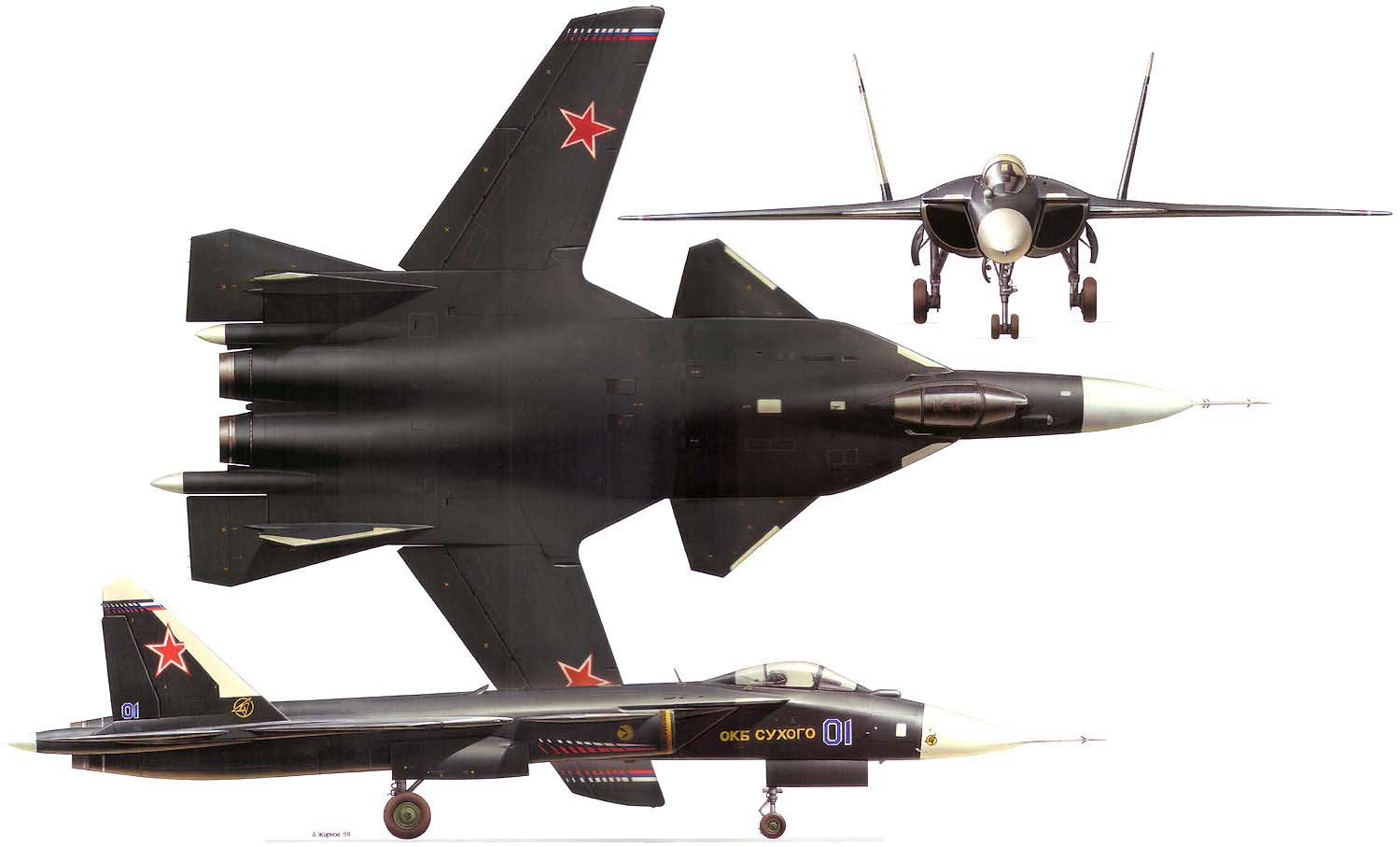This is a rather long question, since I try to cover the historical background which might not be widely known. If familiar with it, you can skip to the "highlighted sections".
As part of the programme equivalent to the U.S. Advanced Tactical Fighter (ATF), aimed at producing a 5th generation multi-role fighter aircraft, Russia (then USSR) produced (like the U.S. programme) 2 competing designs: one from Mikoyan and the other from Sukhoi. These were the canard/delta Wing 1.42/1.44 from Mikoyan and the FSW (Forward Swept Wing) Su-47 from Sukhoi.
Initially running parallel to the U.S. programme, due to mounting financial difficulties and the eventual collapse of the USSR, the 2 prototypes were ready more than 5 years later than their respective US counterparts (The 1.42/1.44 prototype was completed at 1994-5 but performed its first flight in 2000 while the Su-47 was completed in 1992-3(?) and flew in 1997).
Even before the collapse of the USSR, though, the Soviet Air Force had chosen the Mikoyan design as its next 5th-gen fighter.
Yet, after USSR's collapse, Sukhoi was able to finance its own project and have it ready earlier, while also running an R&D programme and further evaluating/improving the design. By the time the Mikoyan MFI performed its first flight, the Su-47 was already taking part in air shows while serving as a testbed for various technologies (many of them finding their way to PAK FA).
This raises a number of questions, all relating to why the Su-47 was not chosen, neither before the USSR collapsed, and secondly why it was not chosen in the 90s by Russia as it was clearly a design in a more mature stage.
Was the basic design premise-that of a FSW fighter aircraft-flawed?
Were the problems facing this configuration, relating mainly to wing durability, still insurmountable?
To be precise, a FSW design offers superior manoeuvrability, especially in low speeds, retaining an AoA (Angle of Attack) undreamed of by a "conventional" fighter, is essentially spin-proof, it has a better lift/drag ratio, lower stalling speed while it can help with low observability characteristics (Stealth) as radar beams impacting the wings are reflected to the fuselage , ideally one with a comprehensive RAM (radiation absorbent material) covering.
But a FSW design has a major drawback-the loads that accumulate on the wings during manoeuvring, are much greater than in a conventional wing, leading easier to deformation and structural failure. The Su-47 tackled this problem by making extensive use of composite materials for the wings which offer greater durability at less weight.
If the FSW design was viable, was it a matter of economics?
After the USSR collapsed and Russia embarked on economic "reforms" its defence budget shrank dramatically for a decade and new procurement was very difficult. But after 1999-2000, gradually funding increased and when the need for a 5th gen aircraft became again apparent, the PAK FA (Sukhoi T-50) project began, around 2005.
But given that a design was already ready, namely that of Su-47, why not save all the expenses (PAK FA development is in the range of 10 billion US$) while gaining in terms of time?
I usually do not like to speculate on "What if?" historical scenarios but had the Su-47 been chosen, say in 2003-4, by now RuAF could have fielded a fleet of 100+ airframes (assuming initial production starting at about 2008-9).




